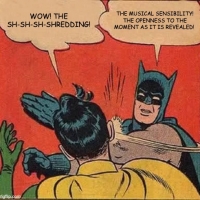DjangoBooks.com
Welcome to our Community!
Categories
- 17.9K All Categories
- 394 General
- 255 Welcome
- 10 Archtop Eddy's Corner
- 74 CD, DVD, and Concert Reviews
- 29 FAQ
- 9 Gypsy Jazz Italia
- 17 Photos
- 24 Gypsy Picking
- 3 Unaccompanied Django
- 1 Pearl Django Play-Along Vol.1
- 1 Gypsy Fire
- 21 Gypsy Rhythm
- 551 Gypsy Jazz University - Get Educated
- 104 Gypsy Jazz 101
- 175 Repertoire
- 128 History
- 88 Technique
- 39 Licks and Patterns
- Daniel Givone Manouche Guitare Method Users Group
- 17 Eddie Lang Club
- 996 Gypsy Jazz Gear
- 645 Guitars, Strings, Picks, Amps, Pickups and Other Accessories
- 315 Classifieds
- 36 Recording
- 38 Other Instruments
- 17 Violin
- 3 Mandolin
- 6 Accordion
- 3 Bass
- 9 Woodwinds
- 197 Gypsy Jazz Events
- 78 North America
- 81 Europe
- 38 International











Comments
:arrow: An increasing interest on the part of listeners in prewar jazz fed by a steady stream of quality remasters. I started listening to postwar jazz, then went back to Ellington, Armstrong, etc., then was blown away when I got the first JSP Django box, which was a world away from any Django I'd ever heard in sound quality. Everything I heard before was painful to listen to.
:arrow: The soundtrack to Woody Allen's "Sweet and Lowdown" by Bucky Pizarelli and Howard Alden. It was a popular, fun movie with a great soundtrack. That was the first time I heard contemporary musicians playing in this style. It was also the first time I saw a Selmer-style guitar not in a grainy B & W photo.
:arrow: There are a lot of aging former noodlers out there looking to get back into guitar but not interested in plugging in. Just look at the market for high quality acoustic guitars these days. Some of them, like me, left rock and folk behind for jazz long ago. Some kind of acoustic jazz was only logical for them.
:arrow: Did I mention Django? It's not just that he's a great player, though he certainly is. It's also the heat. All that vibrato, all those bends, all that high-speed virtuosity was bound to appeal to players who started out listening to the first generation of rock guitar heroes. Although I'd been listening to jazz for over twenty years before I started listening to Django, I never really took to modern jazz guitar because it seemed to me to lack the expressiveness of the great horn players or the percussiveness of my favorite piano players. Django had it all. (The expressiveness of the Selmer probably played a big role too.) I still listen to him much more than anybody else in this style.
:arrow: I agree with djangology about the importance of the web. When I first went on line to look for resources, I had no idea there had been a revival. I thought it was just me! Nobody was playing to this music in Santa Barbara when I started out, nobody carried the guitars, and nobody I knew listened to Django. I doubt I would have persevered were it not for all the resources I found on the web. I was stunned! Gypsy Picking was a crucial find because it allowed me finally to get my right hand sorted out. Sort of. Powertab was a revelation. And Paul Hostetter, whom I found through his wonderful Selmer pages, and whom I've still never met, was incredibly generous in helping me sort through guitar options. I didn't even have to go through the humiliation of playing in front of anybody!
None of this has anything to do with how the music stayed alive, but I think it has a lot to do with how amateur guitarist / jazz fans found their way to it, at least in the US.
-Cameron